Celestial Connections
A relational architecture installation with the sky
Project Milestones
In the last months, due to the still going on pandemic situation, I have become interested in ways to bring the digital world into the physical space and vice versa. In particular, I am interested in how the physical world could influence the entities in the digital work. This has led me to explore IoT, with Arduino and sensors, as a bridge between the two worlds.
These are three milestones in this journey. The Moon, Fearful Symmetry and Noisy Heartbeats. My visualizations are inspired by natural forms that I try to code digitally.
On the technical side, I used, Arduino, Processing and TouchDesigner. The source code can be found in this Git repository.
All this work has been encouraged by Marjolijn Ruyg.

Generative art & Relational architecture
Some say the stars decide our destiny, but could we decide the destiny of the stars?
Note 13-12-2020: these are the first steps towards an installation in the public space.
In Fahrenheit 451, very early in the book the protagonist, Montag, is confronted with the possibility that his sadness and emptiness could be because he had forgotten to look at the night sky. In a similar way, I think that sometimes we forget to look at the public space in the city and appreciate it. As the Mexican-Canadian artist Rafael Lozano points out, most of the use of public space nowadays in cities is for commercial activities such as shopping. In this sense, I reread this by saying that inhabitants and vistors of the city do not really relate to the public space, let alone take ownership of it. In particular, they do not relate to the architectural objects present in the public space.
The work Celestial Connections wants to bring the public space and the cosmic space together. By bringing these two disjoint spaces together, inhabitants or visitors could relate to them. It is then up to them to draw their own conclusions.
Installation
Celestial Connections consists of two “celestial bodies” projected on architectural bodies. Inhabitants or visitors of the space can interact/relate with the “celestial bodies”, the architectural bodies and with each other at different levels. All these interactions will be interlaced with each other. The interactions build on the following layers:
Layer One
Each of the celestial bodies is projected massively on public architectural bodies, e.g. a public square and the buildings around it. With this, the visitors are confronted with two usually dissociated spaces in one context. This in itself, as Lozano postulates, allows the visitors to use the public space for a leisure activities different from shopping.
A first sketch on the celestial bodies can be found below.
A first sketch on how multiple users could interact with a generative visual can bee seen in the work Fearful Symmetry.
Layer Two
Each of the celestial bodies is connected to (dynamic) biometric sensors that the visitors can use. Their interaction will change the existence of the celestial bodies in a visual manner that the visitors can directly see. Other visitors will also modify the projection. The result depends on the all the interactions at a given time.
A first sketch on these visuals can be seen in the work Noisy Heartbeats
Layer Three
Although, the celestial bodies may seem disconnected in the local physical space, they are part of a bigger system (the internet) where they are connected. Concretely, they are part of a virtual gravitational system like the moon-earth-sun system. The interactions of the visitors not only directly modify the visuals but also influence the system. They accelerate or delay the eclipses that would naturally take place.
In principle, the two celestial bodies do not have to be projected on the same public space but could be separated. By means of the internet they would still be connected and the interactions/traces will be seen to affect the celestial bodies accordingly.
Other pictures of the project
Scroll left to right
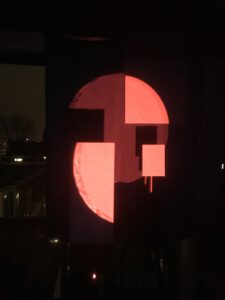
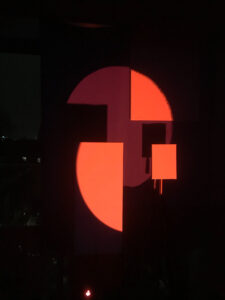
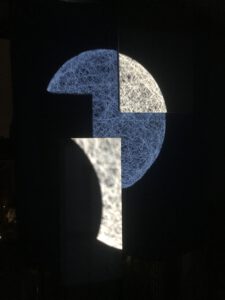
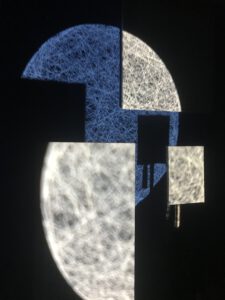
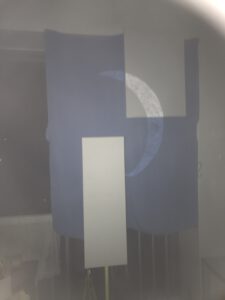
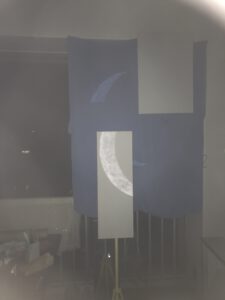
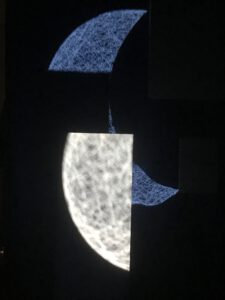
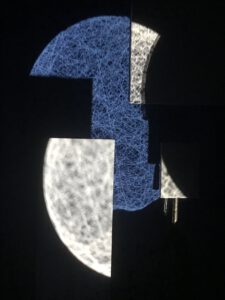
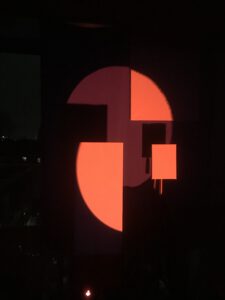
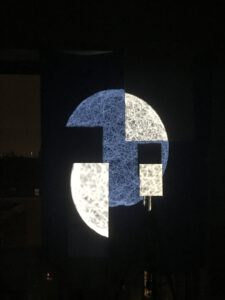
Some ideas
Moving forward
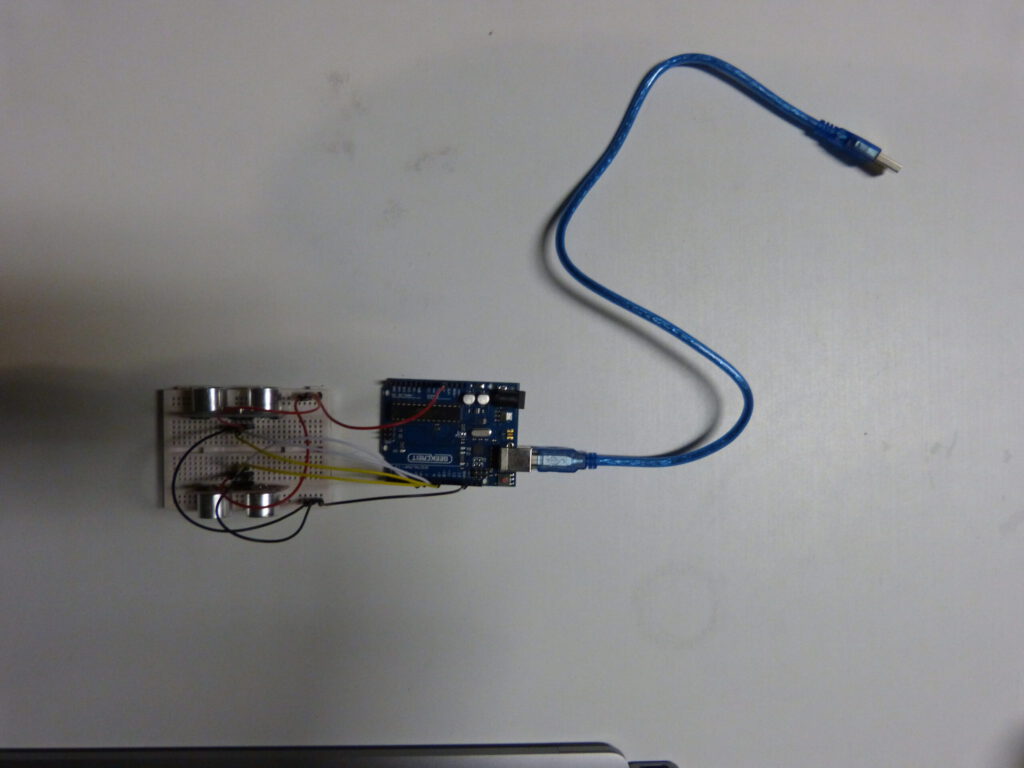
Independent Eclipses
In this version of the installation, there was one sensor that controlled the whole eclipse. It would be interesting to find out whether the different panels could react independently. In this way, the visitors would have to interact to produce a whole eclipse.
Technical Improvement
The code here could still use some improvement. For example, changing the colors or adding some extra animations. The code used here can be found in the Git repository linked in this block
